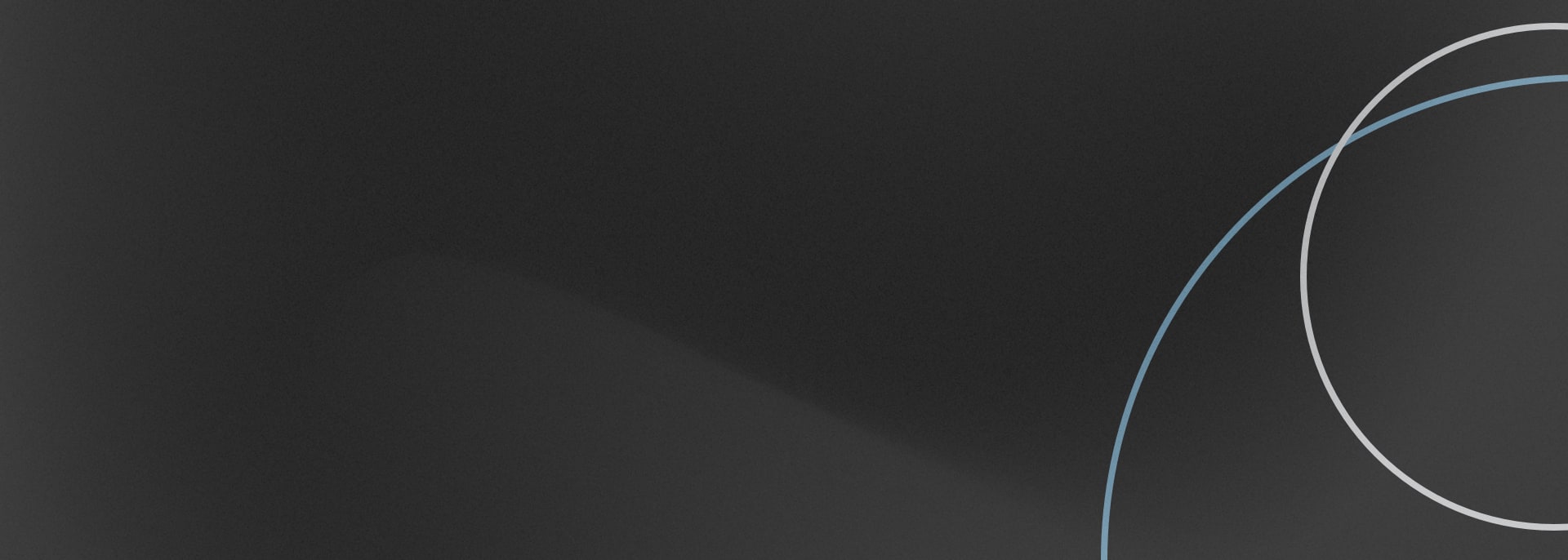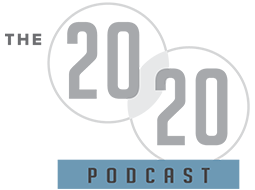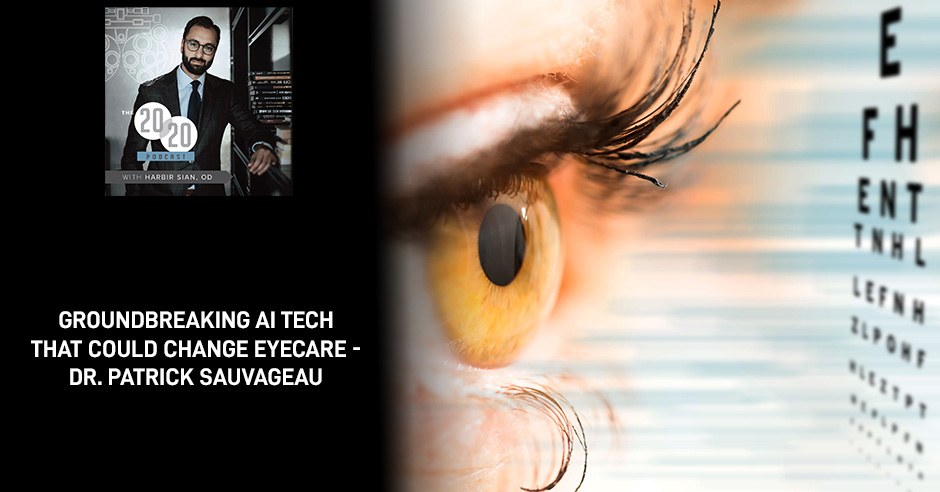
With all the discussion about AI, it is hard to know which technologies will actually have an impact on the eye care industry. However, there is one piece of AI-powered tech that is showing promise of shaking up not just eye care, but possibly many facets of all health care. In this episode, Dr. Patrick Sauvageau, founder of Zilia, discusses how his company combines traditional retinal imaging with spectroscopy to create an entirely new way to diagnose ocular diseases. As they say, the eye is a unique window into someone’s cell. Tune in to this enlightening conversation and find out more about how Zilia leverages AI-powered tech to revolutionize the eye care industry.
—
Watch the episode here
Listen to the podcast here
GROUNDBREAKING AI Tech That Could Change Eyecare – Dr. Patrick Sauvageau
I’m here in Quebec City at the 38th Congress of the Canadian Association of Optometry, and my amazing guest is Dr. Patrick Sauvageau. He is an Optometrist, a clinic owner, and a serial entrepreneur. We’re going to be talking about his MedTech company, Zilia. He’s also the Vice President of the Quebec Association of Optometrists. He’s doing everything and anything possible, and he is doing it well. I’m excited to have you here, Patrick. Thank you so much for joining me.
Thank you so much for the invitation.
If you haven’t been to Quebec City, you guys need to come here and visit Patrick. He lives here. One of the main topics of discussion here, I’m seeing three different lectures, is AI. We’re going to talk a little bit about AI. Let’s rewind and talk about your journey. You went to Montreal for optometry school. When did you have all of this insight to do all the different things you’re doing and become an entrepreneur?
I went to the University of Montreal School of Optometry. For me, the process of choosing a career path was not easy. I had many interests and things I wanted to do and pursue. I ended up going to optometry school. During my first summer as an intern, I started working in the lab. I got my interest growing. From there, I ended up doing my OD degree and Master in Vision Science. I graduated in 2010. I started to practice here in Quebec City.
We’ll talk a little bit about starting your own clinic. I want to focus a bit more on the technology side of it. When did you have the inspiration to start your own company? What was the inspiration to start your first company, if you don’t mind telling us a little bit about what that was?
When I came out of school, I started practicing in an ophthalmology practice here in Quebec City. I did that for two years. That was both exciting and interesting. I learned a lot, but I knew I wanted to be also an entrepreneur. I always knew I wanted to have my own office. Two years after graduation, I joined a clinic here with two partners. That was my first real experience in entrepreneurship. I learned a lot from the whole process. I ended up buying the clinic entirely a few years ago. I’m the sole owner. That was in 2012.
A couple of years afterward, with a classmate, we started two other clinics in Montreal. That was also a good learning experience because it’s something to buy a practice but something else that started from scratch. That was another ball game. In 2016, I had the idea of building a software platform, an eCommerce solution, for eye care professionals. I joined forces with software engineers. We launched that project that we sold a couple of years afterward. That was my first experience in software development and AI development. I learned quite a bit from those experiences altogether.
As for Zilia, the way it came about coming back to the Master’s degree that I did right off the bat almost, I perceived the potential of what that idea was that we’d probably talk about some more. I figured it would be a good opportunity to learn more about ocular health and could mean a good business opportunity. In 2017, I joined forces with my brother, who was a PhD in Engineering. It seemed like a good match to start a MedTech company. That’s what we did in 2017. We did a first capital raise. We have private investors. We hired our first employee, and we kicked off from there.
It is cool to work with your brother and have somebody in your family who’s going to have that level of expertise. You’ve been in this game of entrepreneurship but in the software digital world for a while now. You got a good amount of experience in it. We’ll come back to Zilia. We want to talk about that because that’s a form of technology that’s going to be groundbreaking for eyecare.
Let’s go a little broader. AI is a hot topic now. A lot of people are talking about it and want to learn more about it. There have been a few lectures on AI and its applications. What is AI now as far as legitimate applications in eye care? What do we think could potentially be the applications, and what’s in between? We talked a bit about regulatory things. Let’s see what you think.
The potential for AI in eyecare is immense. It could change the way we practice altogether, from scheduling to the way we’re selling products, managing, detecting, managing ocular diseases, and fitting contact lenses. It can have a meaningful impact in a lot of ways. What is available now for us? Not that much. There’s a lot of potential but not a lot of actual clinical tools that we can use.
The potential for AI in eyecare is immense. It could change the way we’re practicing altogether.
There are a lot of challenges for AI technologies to be adopted clinically. You touched on one of them. Regulatory approval is a big one. When we’re talking about regulatory approvals, Health Canada here in Canada, and FDA in the US, there’s a whole process to getting a drug, medical technology, diagnostic technology, or AI algorithm approved. The first thing is not only to build an algorithm. You have to validate it. Not only do you have to validate it clinically, but you have to be able to explain it.
There are a lot of cool papers we’re seeing in the scientific literature or the news, advancing or saying we could detect this or that with the use of a photo. At the end of it, if it’s a black box and we don’t know what the AI is doing, it won’t pass the bar for regulatory approvals. As eyecare and healthcare professionals, we need to make sure we understand the tools we’re using. We can have good confidence in them. We know their limits also and potential biases. Otherwise, we don’t know what we’re doing.
It reminds me back in school in math class. You have to show your work if you get the answer, but it’s a lot more complex. One of the things that scare people is the black box. We’re scared of what we don’t know or understand. How did it figure that out? How did it get to that?
It’s something to have a black box solution to suggest movies or music. It’s another thing to have a black box solution to diagnose ocular diseases. When we’re talking about healthcare, we cannot apply the same rules as general technology because it can harm people if it’s not done right.
Do you think regulation is strict and stringent? Is it maybe too lax? Is it right?
It’s evolving as it needs to. The framework is evolving as technology also. All those things are evolving quickly. The AI technology we’re referencing is quite recent. The regulatory framework needs to continue to adapt. One example is that even if you get an AI system or algorithm to be approved now, it cannot learn in the process.
It cannot evolve with the data it’s collecting with the current regulatory framework. You’ll have to submit a new version of the algorithm. When we think about that, that’s entirely different from other AI systems we’re using in our cars and phones that are constantly evolving and learning in the process. The systems we’re using in healthcare cannot do that with the regulatory framework in place.
Otherwise, it would be learning every day. It would be something different every single day.
It would involve and would be more accurate and less biased. Real-world data and not only clinical trial data.
Let’s go more specific about you and what you’ve built with Zilia. If you could give everyone the elevator pitch, what is Zilia? We’ll dig into it because it’s exciting, and the potential applications are innumerable. Give us the intro to Zilia and what’s been going on there.
Zilia is a MedTech company. We’re developing a revolutionary platform that uses three things, imaging, spectroscopy, and AI to assess and measure biomarkers in the eye with an initial focus on oxygen saturation or ocular oximetry.
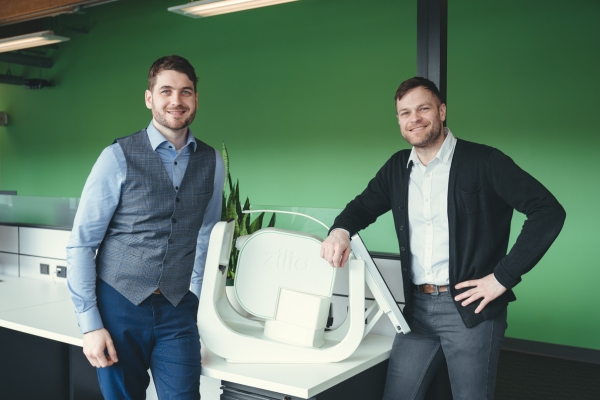
What is spectroscopy? How do those three things come together?
Any molecules or proteins react differently to light. When we shine a light on those things, and we collect the light that comes back, we refer to a unique spectral signature like a fingerprint. What our technology does is shine a low-intensity light at the back of the eye in a fraction of a second. We collect the light that comes back.
It provides us with two things, images or an image at the back of the eye and spectra that we can analyze to assess, test, and look for those unique spectral signatures. In the context of oxygen saturation, we’re looking for the spectral signature of oxyhemoglobin. That is hemoglobin loaded with oxygen and transports oxygen in our blood. We’re looking for the ratio of oxyhemoglobin versus the total hemoglobin available in the blood at the back of the eye.
Hemoglobin carries oxygen. Hemoglobin is not oxygen. They have different signatures.
That’s what we do when we measure oxygen saturation on the finger. It’s the same rationale. We’re not doing it and sensing it the same way because we’re talking about measuring the tissues at the back of the eye. That was a challenge to achieve. It’s the same rationale of what we’re doing when we’re sensing it on the finger.
It is a different technique but quantifies the same thing. Oxygenated hemoglobin versus non. You have the technology and device that takes this image and measures these different spectra of light. There’s the noise of other different spectra coming through, but you’re able to, because of the specific signatures, pick out how much-oxygenated hemoglobin there is. Is this in the retina as a whole? Are we talking through the blood vessels?
You can measure anywhere at the back of the eye. The cool thing about the eye in general, and we know that as eyecare professionals, is that the eye is a unique window into someone’s soul. We keep saying that because it’s true. There are two major reasons for that. It is the only place in the body where we can directly see and assess what’s going on in the blood vessels, or we can see the blood vessels.
The retina is an extension of the brain. The back of the eye is the front of the brain and because of that, we can leverage that, and through our technology, we measure many more biomarkers present in the blood at the back of the eye. We can do that with oxygen oxygenation. We can do that with many other biomarkers.
You already know the specter for those differences. Are you already gathering that data? If you chose to measure proteins or other things in the back of the eye, do you have the ability to do that already?
We’re collecting the spectra. We can build new algorithms to measure spectral signatures that are known. We can eventually look for new spectral signatures of things that haven’t been characterized yet. There are a lot of things that have been characterized through spectroscopy. It is not applied in the eye but applied in the blood that we can leverage. There are also many biomarkers that haven’t been characterized yet that we can look for.
Oximetry, then oxygen saturation. What is the implication there for ocular disease?
If you think about it, ocular oximetry is the biomarker of metabolism in the eye. Thinking about metabolism, the best way to measure that would be to measure oxygen saturation oxygenation. Oxygen saturation is a marker of health and disease in general. Over the last few years, it has been shown to be linked with the pathophysiology of glaucoma, diabetic retinopathy, macular degeneration, retinopathy of prematurity, and so on.
It’s because it is linked with ocular health in general. The retina needs a lot of oxygen to perform correctly. For homeostasis, the oxygen concentration needs to be well-regulated. It’s true in the brain and the eye. If there’s a problem there, a dysregulation, something will happen in terms of damage, and that will lead to what we see with other means. The best tools we have in our clinics are based on looking at the structure, 3D imaging retinal cameras, and 3D imaging OCTs. We’re looking for signs of damage on the back of the eye. We know now that structural damage is proceeded by dysregulation imagination.

In theory, you’re in practice. You will be able to detect these conditions prior to them causing the damage that would show up on these other tests that we have. This is going to help us detect it earlier.
We do a better job at managing them. The treatment options we have are to help pharma companies develop better therapeutic options based on this new biomarker.
It’s not the diagnosis. It’s the monitoring of the condition. Please share more details or information if you feel we can convey how this technology works. What stage are we at now? Are you at with the technology that has been tested? When can we start to see it?
The platform is fully developed. We have run eight different clinical trials in four different sites to date. We are enrolling more than 700 patients. We have cool and exciting data on both glaucoma and diabetic retinopathy. 2023 will be intense in terms of data collection as we’ll launch many other clinical trials in Europe, the US, and Canada.
It’s an exciting period for us because we’re collecting data and showing what oxygen saturation can mean for eyecare professionals in the field. In terms of the next important milestone, regulatory approval is on the shortlist. We’re working hard to get both our FDA clearance and Health Canada clearance in 2025. That’s the current goal.
Let’s say we’re in 2025. Who’s going to have this? Which types of practitioners are going to have this in their office?
My dream would be that Zilia Ocular, the name of our first product, would become a gold standard for eyecare professionals worldwide. That’s the intention here. We’re targeting optometrists and ophthalmologists to start and use that technology after approval.
What I was leaning towards there, Patrick, was the applications. You’ve chosen one specific biomarker that’s going to be relevant to eyecare and eye diseases, but there are other potential biomarkers that can be relevant to all sorts of healthcare professionals. When I start to even think about that, the application, it’s mind-blowing. I imagine you’ve already thought about this. Is it overwhelming? Are you excited? What are you thinking of as potential uses for this device?
Every week, we had biomarkers on the wishlist. It’s exciting. We see a lot of potential and disciplines. We see other important biomarkers in eye care. We see other biomarkers for neurology. We can think of Parkinson’s disease, Alzheimer’s disease, MS, and so forth. We see potential in cancer detection and cardiology. We’re going to have a project starting soon. We’re excited about the prospects, about the potential of it all. Every time we need to start looking, for every biomarker, we need to do some clinical work, trials, and validation. The list is long already in terms of potential biomarkers. Hopefully, this will be huge.
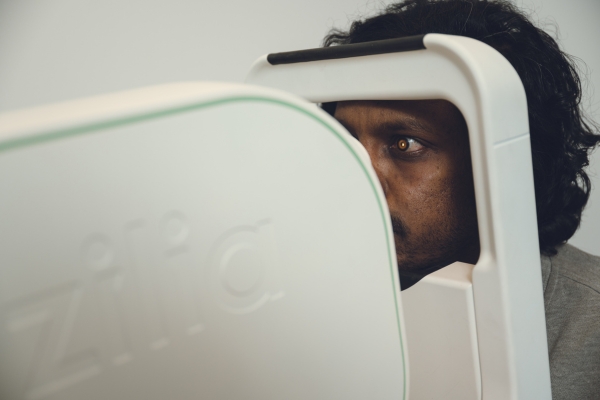
It is to see Zilia Ocular on the market and Zillia X, Y, Z, A, B, and C applications down the road for all the other healthcare providers. I want to get towards wrapping up a little bit here. We talked about this before. I want to have you back on because everything we talked about could be expanded on, the AI and entrepreneurship conversation. We barely even touched on entrepreneurship and the challenges, hiccups, and all the things that come along the way.
Many like yourself who’s done many things simultaneously all together. Family, business, and founding new businesses, there’s so much to be shared there with the audience. We can all learn from that. There’s a lot that we can relate to there, but we’ll save that for the next conversation. There are two questions I ask every guest at the end of the episode, but before we get to that, I want to say, how do people find you or learn more about you or Zilia? You could share some contact information.
If you want to learn more about Zilia, it’s ZiliaHealth.com. It is easy to reach out to me via LinkedIn or via my contacts on our website. Otherwise, my clinic is called Optiboutiq if everyone wants to look at it. As you mentioned in the intro, you’re welcome to come by. I extend the invitation to any OD colleagues who want to come and visit me.
Before we move on to those last couple of questions, I want to give a quick shout-out to our mutual friend, Dr. Henry Luis, for making this introduction. Henry, if you’re reading, thank you very much. The last two questions that I ask every guest. We didn’t talk about the challenges in these things of entrepreneurship. The first question is if we could hop in the time machine and go back to a point in your life that was a challenging and difficult time, and you’re welcome to share that, the experience or the moment if you’d like, but more importantly, what advice would you give to Patrick at that time?
I would go back to before I had to make any decision with regard to the university and the program I was about to choose. It was intense because I didn’t know where to go and what to do. I hesitated between optometry and many other programs. The advice I would give myself is to chill out. You always have time to change if you don’t like that.
I’ve been fortunate because it turned out well for me because I love what I do. It opened up a lot of different avenues for me. Otherwise, I could have changed quite easily. I could have done something else. Back then, it was an anxious period. I was trying to figure out what I wanted to do. I contemplated going to music. That’s another conversation.
That’s going to be one of those things I want to talk to you about. That’s good advice. A lot of times, we do stress out and get caught up in the decision-making. It’s a big decision to make. One choice doesn’t have to define you for the rest of your life. It is a good piece of advice for any of us at any stage of our career, not a student who’s trying to make that choice in their career path.
It’s nice to know that somebody who is as accomplished as you had to go through that decision-making yourself. That’s what you learned from. Thanks for sharing. The last question I ask is for everything that you have accomplished to this point, Patrick, how much of it would you say is due to luck and how much is hard work?
I believe in hard work, but at the same time, I’ve been lucky. I can think of many ways I’ve been lucky, to find my wife, my kids, and the right partners and having a good ecosystem around. I don’t believe in self-made people or in that concept. I don’t see it as such for myself. It’s a matter of the ecosystem I was fortunate enough to grow in, the people I’ve met, the things I’ve learned through those encounters, and to this day, the people that are accompanying me and the process of my journeys. It’s a tough question. It is a mix of determination and sheer work. I couldn’t have done it without working hard.
There are no self-made people; it’s a matter of the ecosystem.
All the things that you’ve been doing don’t happen sitting on the couch. It’s a nice perspective to say you’re lucky to have certain people around you, although that is a result of your work and the effort you’re putting in in different places. Luck has different forms. Sometimes we think of luck as like winning a lottery, but luck could be a chance that you meet a certain person and you connect with them.
Also, the many great colleagues I’ve been working with, either in my clinic or at Zilia. Every day, I tell myself that I’m lucky to work with those great people.
Thank you so much, Patrick. I appreciate you taking the time, and we’ll have to sit down next one. If we could do it in person, it would be amazing. If not, do it virtually. We’ll have you back on to talk more. I look forward to all of us colleagues in the industry to see Zilia coming out and the effect it’s going to have on the industry. Thanks very much.
Thank you again.
Thanks for reading. I’ll be back with another episode.
Important Links
- Zilia
- Quebec Association of Optometrists
- Zilia Ocular
- LinkedIn – Dr. Patrick Sauvageau
- Optiboutiq



